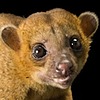HOME | DD
 Sanciusart — Gastornis through the decades
Sanciusart — Gastornis through the decades

#bird #cenozoic #extinct #goose #paleoart #reconstruction #terrorbird #dinosthroughthedecades
Published: 2021-10-09 16:23:53 +0000 UTC; Views: 16057; Favourites: 305; Downloads: 28
Redirect to original
Description
A chart showing the evolution of the appearance of Gastornis since its discovery to present day. Early interpretations, based on scanty material, often suggested aquatic habits. A faulty skeletal reconstruction by Lemoine in 1881, largely chimeric with many non-avian elements of fish and reptiles, hindered the recognition of the close similarities between the European Gastornis and the North American Diatryma. After the description of a nearly complete skeleton from Wyoming in 1917, most reconstructions were based on the later. The hypothesis of carnivorous gastornithids, on the model of the South American phorusrhacids, gained wide acceptance in the mid-20th century, and these giant birds were often considered as having competed with mammals. The alternative view of plant-eating gastornithids has gained ground since the 1990s, but their image as predators remains popular, partly on the basis of erroneous conceptions about their osteology . Contrary to what many reconstructions show, gastornithids had a short tarsometatarsus, corrected since 1978, a beak that was not hooked, and ungual phalanges that were more hoof-like than claw-like. While the early 2000s opened the gates for more speculative features such as pennaceous feathers and fleshy ornaments, representations in the media such as 2003's Walking With Beasts prolongued in the public the conception of this bird as a predator that hunted basal mammals. Present day's reconstruction, inspired by artists like the talented Ville Sinkkonen, show a more natural look of what this bird, now widely accepted as herbivorous, would have actually been like in life.
Enjoy!
Related content
Comments: 25

👍: 0 ⏩: 0

👍: 0 ⏩: 0

👍: 1 ⏩: 0

👍: 0 ⏩: 0

👍: 1 ⏩: 0

👍: 1 ⏩: 0

👍: 1 ⏩: 1

👍: 0 ⏩: 1

👍: 1 ⏩: 0

👍: 0 ⏩: 0

👍: 0 ⏩: 1

👍: 0 ⏩: 1

👍: 0 ⏩: 0

👍: 0 ⏩: 1

👍: 0 ⏩: 0

👍: 1 ⏩: 1

👍: 2 ⏩: 1

👍: 0 ⏩: 1

👍: 0 ⏩: 0

👍: 0 ⏩: 0

👍: 0 ⏩: 2

👍: 1 ⏩: 0

👍: 1 ⏩: 1

👍: 0 ⏩: 1

👍: 0 ⏩: 0

















